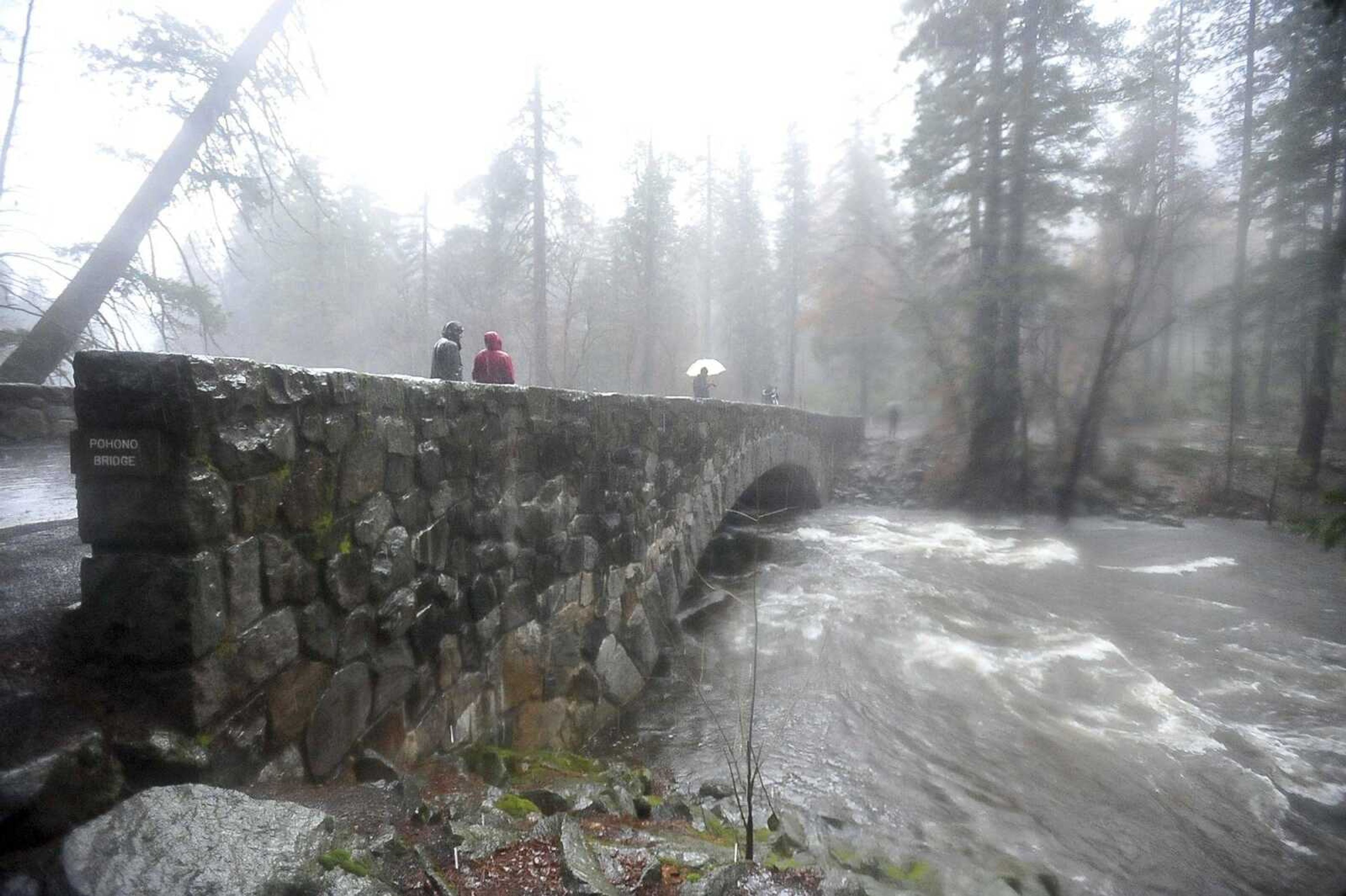Officials: More than 40 percent of California out of drought
SAN FRANCISCO -- More than 40 percent of California is out of drought, federal drought-watchers said Thursday at the tail end of powerful storms that sent thousands of people fleeing from flooding rivers in the north, unleashed burbling waterfalls in southern deserts and doubled the vital snowpack in the Sierra Nevada in little more than a week...
SAN FRANCISCO -- More than 40 percent of California is out of drought, federal drought-watchers said Thursday at the tail end of powerful storms that sent thousands of people fleeing from flooding rivers in the north, unleashed burbling waterfalls in southern deserts and doubled the vital snowpack in the Sierra Nevada in little more than a week.
Declaring California as a whole to be past its official three-year drought emergency will be up to Gov. Jerry Brown, who probably will wait until the end of the winter rain and snow season to make that decision.
But for people in northern cities such as Sacramento, where state workers opened floodgates to ease pressure on levees for the first time in a dozen years, releasing a two-mile-wide torrent of excess water from the surging Sacramento River, the call on declaring the dry spell over in Northern California looked much clearer.
"It's hard to say we have a drought here right now," said Jay Lund, director of the Center for Watershed Sciences at the University of California at Davis.
Lund spoke as he returned from taking students to see the wrenched-open, century-old flood gates in Sacramento, which got its heaviest rain in 20 years this week.
The weekly drought report by federal and academic water experts showed 42 percent of the state had emerged from drought.
This time last year, only 3 percent of California was out of drought.
Southern California, which also is receiving welcome rain from the storms, remains in drought but experienced a dramatic reduction in severity.
Just 2 percent of the entire state, a swath between Los Angeles and Santa Barbara, remains in the sharpest category of drought that includes drying wells, reservoirs and streams and widespread crop losses.
Forty-three percent of the state was in that direst category this time a year ago.
The Cachuma reservoir near still-arid Santa Barbara was at just 8 percent of capacity, even as authorities at Northern California's Shasta Dam opened spillways for the first time in six years to make room for more water to come.
Like many people in Northern California, winery tasting-room supervisor Nate Hayes went out to marvel when this week's heavy rains started and enjoyed taking his canoe down the flooded streets of his town of Rohnert Park.
By Thursday, Hayes and others were tired of the rockslides and mudslides complicating commutes and the round-the-clock downpours keeping everyone inside.
"We're all really excited for the rain," Hayes said. "But at the same time, we kind of want it to be over."
Forecasters said the heaviest of storms fueled by an "atmospheric river" weather phenomenon had passed after delivering the biggest downpours in a decade.
"Everything is on the way down," said Steve Anderson, a meteorologist at the National Weather Service office in Monterey.
A rare Sierra blizzard at the start of the week brought the mountains their heaviest snowfall in six years.
Runoff from the mountains provides Californians with much of their year-round water supply.
Stations up and down the mountain chain were reporting twice the normal amount of rain and snow for this time of year.
Overall, reservoirs were brimming above average for the first time in six years.
"It's been so wet in some places this winter, we would do pretty well even if it tapered off right now," said Daniel Swain, a fellow at the University of California at Los Angeles whose weather blog has been a closely watched chronicle of the drought.
Connect with the Southeast Missourian Newsroom:
For corrections to this story or other insights for the editor, click here. To submit a letter to the editor, click here. To learn about the Southeast Missourian’s AI Policy, click here.









